Running shoes for preventing lower limb running injuries in adults
- PMID: 35993829
- PMCID: PMC9394464
- DOI: 10.1002/14651858.CD013368.pub2
Running shoes for preventing lower limb running injuries in adults
Abstract
Background: Lower-limb running injuries are common. Running shoes have been proposed as one means of reducing injury risk. However, there is uncertainty as to how effective running shoes are for the prevention of injury. It is also unclear how the effects of different characteristics of running shoes prevent injury.
Objectives: To assess the effects (benefits and harms) of running shoes for preventing lower-limb running injuries in adult runners.
Search methods: We searched the following databases: CENTRAL, MEDLINE, Embase, AMED, CINAHL Plus and SPORTDiscus plus trial registers WHO ICTRP and ClinicalTrials.gov. We also searched additional sources for published and unpublished trials. The date of the search was June 2021.
Selection criteria: We included randomised controlled trials (RCTs) and quasi-RCTs involving runners or military personnel in basic training that either compared a) a running shoe with a non-running shoe; b) different types of running shoes (minimalist, neutral/cushioned, motion control, stability, soft midsole, hard midsole); or c) footwear recommended and selected on foot posture versus footwear not recommended and not selected on foot posture for preventing lower-limb running injuries. Our primary outcomes were number of people sustaining a lower-limb running injury and number of lower-limb running injuries. Our secondary outcomes were number of runners who failed to return to running or their previous level of running, runner satisfaction with footwear, adverse events other than musculoskeletal injuries, and number of runners requiring hospital admission or surgery, or both, for musculoskeletal injury or adverse event.
Data collection and analysis: Two review authors independently assessed study eligibility and performed data extraction and risk of bias assessment. The certainty of the included evidence was assessed using GRADE methodology.
Main results: We included 12 trials in the analysis which included a total of 11,240 participants, in trials that lasted from 6 to 26 weeks and were carried out in North America, Europe, Australia and South Africa. Most of the evidence was low or very low certainty as it was not possible to blind runners to their allocated running shoe, there was variation in the definition of an injury and characteristics of footwear, and there were too few studies for most comparisons. We did not find any trials that compared running shoes with non-running shoes. Neutral/cushioned versus minimalist (5 studies, 766 participants) Neutral/cushioned shoes may make little or no difference to the number of runners sustaining a lower-limb running injuries when compared with minimalist shoes (low-certainty evidence) (risk ratio (RR) 0.77, 95% confidence interval (CI) 0.59 to 1.01). One trial reported that 67% and 92% of runners were satisfied with their neutral/cushioned or minimalist running shoes, respectively (RR 0.73, 95% CI 0.47 to 1.12). Another trial reported mean satisfaction scores ranged from 4.0 to 4.3 in the neutral/ cushioned group and 3.6 to 3.9 in the minimalist running shoe group out of a total of 5. Hence neutral/cushioned running shoes may make little or no difference to runner satisfaction with footwear (low-certainty evidence). Motion control versus neutral / cushioned (2 studies, 421 participants) It is uncertain whether or not motion control shoes reduce the number of runners sustaining a lower-limb running injuries when compared with neutral / cushioned shoes because the quality of the evidence has been assessed as very low certainty (RR 0.92, 95% CI 0.30 to 2.81). Soft midsole versus hard midsole (2 studies, 1095 participants) Soft midsole shoes may make little or no difference to the number of runners sustaining a lower-limb running injuries when compared with hard midsole shoes (low-certainty of evidence) (RR 0.82, 95% CI 0.61 to 1.10). Stability versus neutral / cushioned (1 study, 57 participants) It is uncertain whether or not stability shoes reduce the number of runners sustaining a lower-limb running injuries when compared with neutral/cushioned shoes because the quality of the evidence has been assessed as very low certainty (RR 0.49, 95% CI 0.18 to 1.31). Motion control versus stability (1 study, 56 participants) It is uncertain whether or not motion control shoes reduce the number of runners sustaining a lower-limb running injuries when compared with stability shoes because the quality of the evidence has been assessed as very low certainty (RR 3.47, 95% CI 1.43 to 8.40). Running shoes prescribed and selected on foot posture (3 studies, 7203 participants) There was no evidence that running shoes prescribed based on static foot posture reduced the number of injuries compared with those who received a shoe not prescribed based on foot posture in military recruits (Rate Ratio 1.03, 95% CI 0.94 to 1.13). Subgroup analysis confirmed these findings were consistent between males and females. Therefore, prescribing running shoes and selecting on foot posture probably makes little or no difference to lower-limb running injuries (moderate-certainty evidence). Data were not available for all other review outcomes.
Authors' conclusions: Most evidence demonstrates no reduction in lower-limb running injuries in adults when comparing different types of running shoes. Overall, the certainty of the evidence determining whether different types of running shoes influence running injury rates was very low to low, and as such we are uncertain as to the true effects of different types of running shoes upon injury rates. There is no evidence that prescribing footwear based on foot type reduces running-related lower-limb injures in adults. The evidence for this comparison was rated as moderate and as such we can have more certainty when interpreting these findings. However, all three trials included in this comparison used military populations and as such the findings may differ in recreational runners. Future researchers should develop a consensus definition of running shoe design to help standardise classification. The definition of a running injury should also be used consistently and confirmed via health practitioners. More researchers should consider a RCT design to increase the evidence in this area. Lastly, future work should look to explore the influence of different types or running shoes upon injury rates in specific subgroups.
Trial registration: ClinicalTrials.gov NCT02567123 NCT04363476.
Copyright © 2022 The Cochrane Collaboration. Published by John Wiley & Sons, Ltd.
Conflict of interest statement
NR: none HG: none RA: none TP: Contributer to a think tank for a sports equipment manufacturing company (expenses only) IG: none SS: none PD: none BL: Dr Ben Langley has previously undertaken research funded by Anima Sana in Corpore Sano (ASICS). However, the nature of Dr Langley’s previous work and the proposed work would not be eligible for inclusion within the review and focuses more on how running shoe modification or types of running shoes influence potential markers of injury risk or performance rather than injury occurrence.
Figures

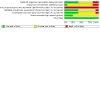
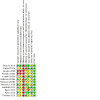
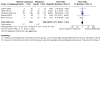

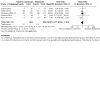
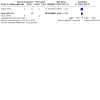

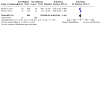


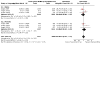
Update of
References
References to studies included in this review
Dubois 2015 {published data only}
-
- Dubois B, Esculier J-F, Fremont P, Moore L, Richards C. Effect of minimalist and traditional running shoes on injury rates: a pilot randomised controlled trial. Footwear Science 2015;7(3):159-64. [DOI: ]
Fuller 2017a {published data only}
-
- ACTRN12613000642785. The effect of footwear on running performance and injury risk [In distance runners, do lightweight running shoes, compared to standard running shoes, improve running performance and reduce risk of injury?]. anzctr.org.au/Trial/Registration/TrialReview.aspx?id=364109 (Date registered 7 June 2013). [https://anzctr.org.au/Trial/Registration/TrialReview.aspx?id=364109&isRe...]
-
- Fuller J. The longer-term effects of minimalist running shoes on lower limb structure and function,running performance, and injury risk. Journal of Science and Medicine in Sport 2017;20(Suppl 3):5-6. [DOI: ]
-
- Fuller JT, Thewlis D, Buckley JD, Brown NA, Hamill J, Tsiros MD. Body mass and weekly training distance influences the pain and injuries experienced by runners using minimalist shoes. A randomized controlled trial. American Journal of Sports Medicine 2017;45(5):1162-70. [DOI: ] - PubMed
-
- Relph N. Confirmation that an abstract found in the search was that of the full paper. Email to: J Fuller 23rd August 2019.
Knapik 2009 {published data only}
-
- Knapik JJ, Swedler DI, Grier TL, Hauret KG, Bullock SH, Williams KW, et al. Injury reduction effectiveness of selecting running shoes based on plantar shape. Journal of Strength and Conditioning Research 2009;23(3):685-97. - PubMed
Knapik 2010a {published data only}
-
- Knapik JJ, Brosch LC, Venuto M, Swedler DI, Bullock SH, Gaines LS, et al. Effect on injuries of assigning shoes based on foot shape in Air Force basic training. American Journal of Preventive Medicine 2010;38(1 Suppl):S197-211. [DOI: ] - PubMed
-
- Relph N. Confirmation of sample sizes of female and male participants [personal communication]. Email to: J Knapik 18 January 2020.
Knapik 2010b {published data only}
Malisoux 2016a {published data only}
-
- Malisoux L, Chambon N, Urhausen A, Theisen D. Influence of the heel-to-toe drop of standard cushioned running shoes on injury risk in leisure-time runners. A randomized controlled trial with 6-month follow-up. American Journal of Sports Medicine 2016;44(11):2933-40. [DOI: 10.1177/0363546516654690] - DOI - PubMed
Malisoux 2016b {published data only}
-
- Malisoux L, Chambon N, Delattre N, Gueguen N, Urhausen A, Theisen D. Injury risk in runners using standard or motion control shoes: a randomised controlled trial with participant and assessor blinding. British Journal of Sports Medicine 2016;50:481-7. [DOI: 10.1136/bjsports-2015-095031] - DOI - PMC - PubMed
-
- Malisoux L, Chambon N, Delattre N, Gueguen N, Urhausen A, Theisen D. The effectiveness of motion control systems in preventing running-related injuries. Footwear Science 2015;7(Suppl 1):S86-7. [DOI: ]
-
- Relph N. Confirmation that an abstract found in the search was that of the full paper. Email to: L Malisoux 14 October 2019.
Malisoux 2020 {published data only}
-
- Malisoux L, Delattre N, Urhausen A, Theisen D. Shoe cushioning influences the running injury risk according to body mass. A randomized controlled trial involving 848 recreational runners. The American Journal of Sports Medicine 2020;48(2):473-80. [DOI: ] - PubMed
-
- NCT03115437. Effects of Shoe Cushioning and Body Mass on Injury Risk in Running (RRI_Interv4). clinicaltrials.gov/ct2/show/NCT03115437 (first received 20 September 2017). [https://clinicaltrials.gov/ct2/show/NCT03115437]
Marshall 2013 {published data only}
-
- Marshall C. Minimalist versus conventional running shoes: effects on lower limb injury incidence, pain and muscle function experienced distance runners [Masters thesis]. Cape Town (South Africa): University of Cape Town, 2013.
-
- Relph N. Confirmation that the thesis had not been published in a peer-reviewed journal [personal communication]. Email to: T Burgess 16 October 2019.
Ryan 2011 {published data only}
-
- NCT00832195. Footwear and injury prevention study. clinicaltrials.gov/ct2/show/NCT00832195 (first received 30 January 2009). [https://clinicaltrials.gov/ct2/show/study/NCT00832195]
Ryan 2014 {published data only}
-
- NCT01334346. Footwear Minimalism Study. clinicaltrials.gov/ct2/show/NCT01334346 (first received 13 April 2011). [https://clinicaltrials.gov/ct2/show/NCT01334346?term=NCT01334346&draw=2&...]
-
- Relph N. Confirmation that an abstract found in the search was that of the full paper. Email to: M Ryan 14 October 2019.
-
- Ryan M, Elashi M, Newsham-West R, Taunton J. Examining the potential role of minimalist footwear for the prevention of proximal lower-extremity injuries. Footwear Science 2013;5(Suppl 1):S31-S32. [DOI: 10.1080/19424280.2013.799538] - DOI
References to studies excluded from this review
Andréasson 1986 {published data only}
-
- Andréasson G, Peterson L. Effects of shoe and surface characteristics on lower limb injuries in sports. Journal of Applied Biomechanics 1986;2(3):202-9.
Archer 2019 {published data only}
-
- Archer S. Minimalist shoes and stronger foot muscles. IDEA Fitness Journal 2019;16(9):6.
Attwells 2000 {published data only}
-
- Attwells RL, Smith RM. Shoe control of foot motion during walking and running. ISBS-Conference Proceedings Archive 2000;18:1-2.
Atukorala 2017 {published data only}
-
- Atukorala I, Pathmeswaran A, Makovey J, March L, Chang T, Zhang Y, et al. Are shoes and physical activity associated with pain flares in knee osteoarthritis? Osteoarthritis and Cartilage 2017;25:S373-4.
Begizew 2019 {published data only}
-
- Begizew DM, Grace JM, Heerden HJ. Lower-extremity running-related injuries among 10,000-meter long distance runners in Ethiopia. Journal of Human Sport and Exercise 2019;14(2):358-73.
Bejjani 1987 {published data only}
-
- Bejjani FJ. Occupational biomechanics of athletes and dancers: a comparative approach. Clinics in Podiatric Medicine and Surgery 1987;4(3):671-711. - PubMed
Bendix 1985 {published data only}
-
- Bendix A, Winkel J, Bojsen-Moller F. Effect of soft shoes and clogs on induced foot swelling. Biomechanics XA 1985;927:927.
Bishop 2018 {published data only}
Brund 2017 {published data only}
-
- Brund RB, Rasmussen S, Nielsen RO, Kersting UG, Laessoe U, Voigt M. Medial shoe-ground pressure and specific running injuries: a 1-year prospective cohort study. Journal of Science and Medicine in Sport 2017;20(9):830-4. - PubMed
Conrad 1975 {published data only}
-
- Conrad NL. The jogging shoe: some comparisons. Journal of the American Podiatry Association 1975;65(6):607. - PubMed
CTRI/2019/08/020567 {published data only}
-
- CTRI/2019/08/020567. Barefoot training in runners. ctri.nic.in/Clinicaltrials/pmaindet2.php?trialid=30352 (first received on 6th August 2019).
CTRI/2020/11/029412 {published data only}
-
- CTRI/2020/11/029412. A clinical trial to compare running-related injuries and their types in runners running with shoes i. e. Shod and in runners running barefoot or with minimalist shoes i. e. with minimal cushioning. Clinical Trials Registry - India (first received on 26th November 2020);029412.
Finestone 1992 {published data only}
-
- Finestone A, Shlamkovitch N, Eldad A, Karp A, Milgrom C. A prospective study of the effect of the appropriateness of foot-shoe fit and training shoe type on the incidence of overuse injuries among infantry recruits. Military Medicine 1992;157(9):489-90. - PubMed
Frecklington 2019 {published data only}
Grier 2016 {published data only}
-
- Grier T, Canham-Chervak M, Bushman T, Anderson M, North W, Jones BH. Minimalist running shoes and injury risk among United States army soldiers. American Journal of Sports Medicine 2016;44(6):1439-46. - PubMed
Hamill 2017 {published data only}
-
- Hamill J. Evaluating running footwear. Footwear Science 2017;9(Suppl 1):S33-4.
Hein 2011 {published data only}
-
- Hein T, Janssen P, Wagner-Fritz U, Grau S. The influence of footwear and ankle kinematics on the development of overuse injuries in runners. A prospective study. Footwear Science 2011;3(Suppl 1):S72-3.
Johnson 1995 {published data only}
-
- Johnson TE. Running and court shoes. In: Sports and Fitness Equipment Design. Champaign: Human Kinetics, 1995:15-30.
Kemler 2018 {published data only}
Kirby 2019 {published data only}
-
- Kirby BS, Hughes E, Haines M, Stinman S, Winn BJ. Influence of performance running footwear on muscle soreness and damage. Footwear Science 2019;11(Suppl 1):S188-9. [DOI: 10.1080/19424280.2019.1606325] - DOI
Korsgaard Brund 2019 {published data only}
-
- Korsgaard Brund R, Nielsen RO, Parner E, Rasmussen S, Voigt M. Changes in the running-related injury incidence rate ratio in a 1000-km explorative prospective cohort study involving two unspecific shoe changes. Footwear Science 2019;4(11):63-70.
Marti 1989 {published data only}
-
- Marti B. Relationship between running injuries and running shoes: results of a study of 5000 participants of a 16 km run. In: The Shoe in Sport. Chicago: Yearbook Medical Publishers, 1989:256-65.
Milgrom 1992 {published data only}
-
- Milgrom CH, Finestone AA, Shlamkovitch N, Wosk J, Laor A, Voloshin AR, et al. Prevention of overuse injuries of the foot by improved shoe shock attenuation. Clinical Orthopedics 1992;281:189-92. - PubMed
NCT01332110 {published data only}
-
- NCT01332110. Treatment for patellofemoral pain syndrome using footwear. clinicaltrials.gov/ct2/show/NCT01332110 (first received 8 April 2011).
NCT02567123 {published data only}
-
- NCT02567123. Running study for runners with chronic knee pain. clinicaltrials.gov/show/NCT02567123 (first received 2 October 2015). [https://clinicaltrials.gov/show/NCT02567123]
NCT02987517 {published data only}
-
- NCT02987517. A comparative effectiveness study of two interventions aimed at reducing impact loads in runners. https://clinicaltrials.gov/ct2/show/NCT02987517 (first received 9 December 2016).
NCT03311490 {published data only}
-
- NCT03311490. The Spraino Pilot Trial. clinicaltrials.gov/ct2/show/NCT03311490 (first received 17 October 2017).
NCT03636425 {published data only}
-
- NCT03636425. Musculoskeletal disorders in mountain runners. clinicaltrials.gov/ct2/show/NCT03636425 (first received 17 August 2018).
NCT03760380 {published data only}
-
- Comparing pain and kinematic outcomes of two gait-modifying shoe interventions. NCT03760380 2018.
NCT03867890 {published data only}
-
- NCT03867890. Relationship between footwear consumer behaviour and lower extremity injuries. clinicaltrials.gov/ct2/show/NCT03867890 (first received 8 March 2019).
NCT04363476 {published data only}
-
- NCT04363476. Preventing knee osteoarthritis through exercise and education following knee injury. clinicaltrials.gov/ct2/show/NCT04363476 (first received 27 April 2020).
Nielsen 2014 {published data only}
-
- Nielsen RO, Buist I, Parner ET, Nohr EA, Sørensen H, Lind M, et al. Foot pronation is not associated with increased injury risk in novice runners wearing a neutral shoe: a 1-year prospective cohort study. British Journal of Sports Medicine 2014;48(6):440-7. - PubMed
Powell 2011 {published data only}
-
- Powell D. Type of running shoe, individual footprint, and risk of injury in Marine Corps training. Clinical Journal of Sport Medicine 2011;21(5):462-3. - PubMed
Robinson 1991 {published data only}
-
- Robinson JB, Tristant SP. Running shoe comparison: a preliminary study. American Academy of Podiatric Sports Medicine Newsletter 1991;8:8.
Ryan 2019b {published data only}
-
- Ryan M, Fraser S, McDonald K, Taunton J. Examining the degree of pain reduction using a multielement exercise model with a conventional training shoe versus an ultraflexible training shoe for treating plantar fasciitis. Physician and Sports Medicine 2009;37(4):68-74. - PubMed
Stubbs 2006 {published data only}
-
- Stubbs G, Schwellnus MP. Does running shoe prescription alter the risk of developing a running injury? International Sports Medicine Journal 2006;7(2):138-53.
Taunton 2003 {published data only}
Willems 2021 {published data only}
-
- Willems TM, Ley C, Goetghebeur E, Theisen D, Malisoux L. Motion- control shoes reduce the risk of pronation-related pathologies in recreational runners: a secondary analysis of a randomized controlled trial. Journal of Orthpaedic and Sports Physical Therapy 2021;51(3):135-43. [DOI: 10.2519/jospt.2021.9710] - DOI - PubMed
References to studies awaiting assessment
Ryan 2019a {published data only}
-
- NCT03082651. Alternate Run Study. clinicaltrials.gov/ct2/show/NCT03082651 (first received 17 March 2017). [https://clinicaltrials.gov/ct2/show/NCT03082651?term=NCT03082651&draw=2&...]
-
- Ryan M, Haines M, Taunton J. The run alternate study: examining the effect of training and footwear variability in the prevention of running pain and injuries. Footwear Science 2019;11(Suppl 1):S202-3. [DOI: 10.1080/19424280.2019.1606333] - DOI
References to ongoing studies
ACTRN12613000612718 {unpublished data only}ACTRN12613000612718
-
- ACTRN12613000612718. The effect of running shoe design on comfort and injury rates in recreational runners [A randomised controlled trial to compare comfort and injury rates in recreational runners with normal foot type wearing motion control running shoes versus barefoot running shoes versus their own running shoes.]. anzctr.org.au/Trial/Registration/TrialReview.aspx?id=364309 (First received 23 May 2013).
-
- Relph N. Confirmation the trial was ongoing [personal communication]. Email to: V Chuter 28 April 2020.
Additional references
Adirim 2003
Asplund 2005
Baltich 2017
Begizew 2018
-
- Begizew DM, Grace JM, Van Heerden HJ. Lower-extremity running-related injuries among 10,000-meter long distance runners in Ethiopia. Journal of Human Sport and Exercise 2018;14(2):358-73. [DOI: 10.14198/jhse.2019.142.09] - DOI
Bertelsen 2017
Bertelsen 2018
Besomi 2019
-
- Besomi M, Leppe J, Mauri-Stecca MV, Hooper TL, Sizer PS. Training volume and previous injury as associated factors for running-related injuries by race distance: a cross-sectional study. Journal of Human Sport and Exercise 2019;14(3):549-59. [DOI: 10.14198/jhse.2019.143.06.] - DOI
Bird 1997
-
- Bird S, Black N, Newton P. Sports Injuries: Causes, Diagnosis, Treatment and Prevention (Therapy in Practice). Cheltenham UK: Stanley Thornes (Publishers) Ltd. Sports, 1997.
Buist 2008
-
- Buist I, Bredeweg SW, Van Mechelen W, Lemmink KA, Pepping GJ, Diercks RL. No effect of a graded training program on the number of running-related injuries in novice runners: a randomized controlled trial. American Journal of Sports Medicine 2008;36:33-9. [DOI: 10.1177/0363546507307505] - DOI - PubMed
Buist 2010
-
- Buist I, Bredeweg SW, Bessem B, Van Mechelen W, Lemmink KA, Diercks RL. Incidence and risk factors of running-related injuries during preparation for a 4-mile recreational running event. British Journal of Sports Medicine 2010;44(8):598-604. - PubMed
Bullock 2010
-
- Bullock SH, Jones BH, Gilchrist J, Marshall SW. Prevention of physical training-related injuries recommendations for the military and other active populations based on expedited systematic reviews. American Journal of Preventive Medicine 2010;38(1 Suppl):S156-81. [DOI: 10.1016/j.amepre.2009.10.023] - DOI - PubMed
Butler 2007
Cheung 2007
-
- Cheung RT, Ng GY. Efficacy of motion control shoes for reducing excessive rearfoot motion in fatigued runners. Physical Therapy in Sport 2007;8:75-81.
Clarke 1983
Clermont 2017
Clermont 2019
Cobey 1981
Davis 2014
Deeks 2017
-
- Deeks JJ, Higgins JP, Altman DG (editors), on behalf of the Cochrane Statistical Methods Group. Chapter 9: Analysing data and undertaking meta-analyses. In: Higgins JPT, Churchill R, Chandler J, Cumpston MS (editors), Cochrane Handbook for Systematic Reviews of Interventions version 5.2.0 (updated June 2017), Cochrane, 2017. Available from www.training.cochrane.org/handbook.
Difiori 1999
Dinato 2015
Esculier 2015
Ferber 2009
Fulton 2014
Gardner 1988
Glanville 2019
-
- Glanville J, Dooley G, Wisniewski S, Foxlee R, Noel-Sto A. Development of a search filter to identify reports of controlled clinical trials within CINAHL Plus. Health Information and Libraries Journal 2019;36:73-90. - PubMed
GRADEpro GDT [Computer program]
-
- GRADEpro GDT. Version accessed after June 2019. Hamilton (ON): McMaster University (developed by Evidence Prime), 2020. Available at gradepro.org.
Hawes 1992
Hespanhol 2015
Higgins 2003
Higgins 2017
-
- Higgins JP, Altman DG, Sterne JA (editors). Chapter 8: Assessing risk of bias in included studies. In: Higgins JPT, Churchill R, Chandler J, Cumpston MS (editors), Cochrane Handbook for Systematic Reviews of Interventions version 5.2.0 (updated June 2017), Cochrane, 2017. Available from www.training.cochrane.org/handbook.
Hoitz 2020
-
- Hoitz F, Mohr M, Asmussen M, Lam W-K, Nigg S, Nigg B. The effects of systematically altered footwear features on biomechanics, injury, performance, and preference in runners of different skill level: a systematic review. Footwear Science 2020;12(3):193-215. [DOI: 10.1080/19424280.2020.1773936] - DOI
Honert 2020
Hulme 2017
Hulteen 2017
Hutchison 2015
-
- Hutchison L, Scharfbillig R, Uden H, Bishop C. The effect of footwear and foot orthoses on transverse plane knee motion during running - a pilot study. Journal of Science and Medicine in Sport 2015;18:748-52. - PubMed
Kaufman 2000
Kirby 1987
Kirby 1989
Kirby 1992
Kornaat 2014
Langley 2015
Langley 2018
-
- Langley B, Cramp M, Morrison SC. The influence of running shoes on inter-segmental foot kinematics. Footwear Science 2018;10(2):83-93.
Langley 2019
Lee 2014
Lefebvre 2011
-
- Lefebvre C, Manheimer E, Glanville J. Chapter 6: Searching for studies. In: Higgins JP, Green S (editors). Cochrane Handbook for Systematic Reviews of Interventions. Version 5.1.0 (updated March 2011). The Cochrane Collaboration, 2011. Available from www.cochrane-handbook.org.
Lemont 2003
Leppänen 2014
Lilley 2013
Lopes 2012
Lun 2004
Lynch 1999
Malisoux 2015
Marchena‐Rodriguez 2020
Marti 1988
McKenzie 1985
-
- McKenzie DC, Clement DB, Taunton JE. Running shoes, orthotics, and injuries. Sports Medicine 1985;2(5):334-47. - PubMed
Messier 1988
-
- Messier S, Pittala K. Etiologic factors associated with selected running injuries. Medicine and Science in Sports and Exercise 1988;20(5):501-5. - PubMed
Milani 1997
-
- Milani TL, Henning EM, Lafortune MA. Perceptual and biomechanical variables for running in identical shoe constructions with varying midsole hardness. Medicine and Science in Sports and Exercise 1997;12(5):294-300. - PubMed
Moher 2009
Mueller‐Wohlfahrt 2013
Nachbauer 1992
-
- Nachbauer W Nigg BM. Effects of arch height of the foot on ground reaction forces in running. Medicine and Science in Sports and Exercise 1992;24(11):1264-9. - PubMed
Napier 2018
Nigg 2015
Nigg 2017
Parkkari 2004
Perry 1995
Rabusin 2019
Ramsey 2019
Ramsey 2020
Ramskov 2015
-
- Ramskov D, Barton C, Nielsen RO, Rasmussen S. High eccentric hip abduction strength reduces the risk of developing patellofemoral pain among novice runners initiating a self-structured running program: a 1-year observational study. Journal of Orthopaedic and Sports Physical Therapy 2015;45(3):153-61. [DOI: 10.2519/jospt.2015.5091] - DOI - PubMed
Reinking 2012
Reinschmidt 2000
RevMan 2014 [Computer program]
-
- Review Manager 5 (RevMan 5). Version 5.3. Copenhagen: Nordic Cochrane Centre, The Cochrane Collaboration, 2014.
Richards 2009
Root 1971
-
- Root ML, Orien WP, Weed JH, Hughes RJ. Biomechanical Examination of the Foot, Volume 1. Los Angeles: Clinical Biomechanics Corporation, 1971.
Root 1977
-
- Root ML, Orien WP, Weed JH. Normal and Abnormal Function of the Foot. Los Angeles: Clinical Biomechanics Corporation, 1977.
Rose 2011
-
- Rose A, Birch I, Kuisma R. Effect of motion control running shoes compared with neutral shoes on tibial rotation during running. Physiotherapy 2011;97(3):250-5. - PubMed
Rothschild 2012
Saragiotto 2014
Satterthwaite 1999
Schünemann 2017
-
- Schünemann HJ, Oxman AD, Higgins JP, Vist GE, Glasziou P, Akl E, et al, on behalf of the Cochrane GRADEing Methods Group and the Cochrane Statistical Methods Group. Chapter 11: Completing ‘Summary of findings’ tables and grading the confidence in or quality of the evidence. In: Higgins JP, Churchill R, Chandler J, Cumpston MS (editors), Cochrane Handbook for Systematic Reviews of Interventions version 5.2.0 (updated June 2017). Cochrane, 2017. Available from www.training.cochrane.org/handbook.
Sinclair 2013
-
- Sinclair J, Taylor JT, Andrews S. Influence of barefoot, barefoot inspired and conventional shoes on tibial accelerations and loading kinetics during running in natural rearfoot strikers. Comparative Exercise Physiology 2013;9:161-7. [DOI: 10.3920/CEP13023] - DOI
Squadrone 2009
-
- Squadrone R, Gallozzi C. Biomechanical and physiological comparison of barefoot and two shod conditions in experienced barefoot runners. Journal of Sports Medicine and Physical Fitness 2009;49(1):6-13. - PubMed
Sterne 2017
-
- Sterne JA, Egger M, Moher D, Boutron I (editors). Chapter10: Addressing reporting biases. In: Higgins JP, Churchill R, Chandler J, Cumpston MS (editors), Cochrane Handbook for Systematic Reviews of Interventions version 5.2.0 (updated June 2017), Cochrane, 2017. Available from www.training.cochrane.org/handbook.
Taunton 2002
TenBroek 2014
Tonoli 2010
-
- Tonoli C, Cumps E, Aerts I, Verhagen E, Meeusen R. Incidence, risk factors and prevention of running related injuries in long-distance running: a systematic review. Injury, location and type. Sport en Geneeskunde 2010;5:12-8.
Van der Worp 2015
Van Gent 2007
Van Mechelen 1993
Van Mechelen 1997
-
- Van Mechelen WT. The severity of sports injuries. Sports Medicine 1997;24:176-80. - PubMed
Van Middelkoop 2008
Vidbæk 2015
Wen 1998
-
- Wen DY, Puffer JC, Schmalzried TP. Injuries in runners: a prospective study of alignment. Clinical Journal of Sport Medicine 1998;8(3):187-94. - PubMed
Yamato 2015
References to other published versions of this review
Publication types
MeSH terms
Associated data
LinkOut - more resources
Full Text Sources
Medical

